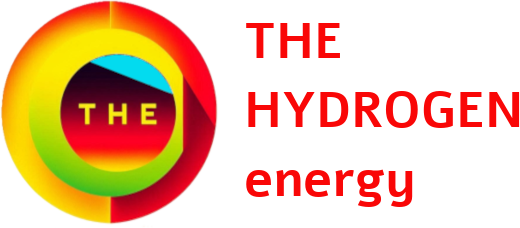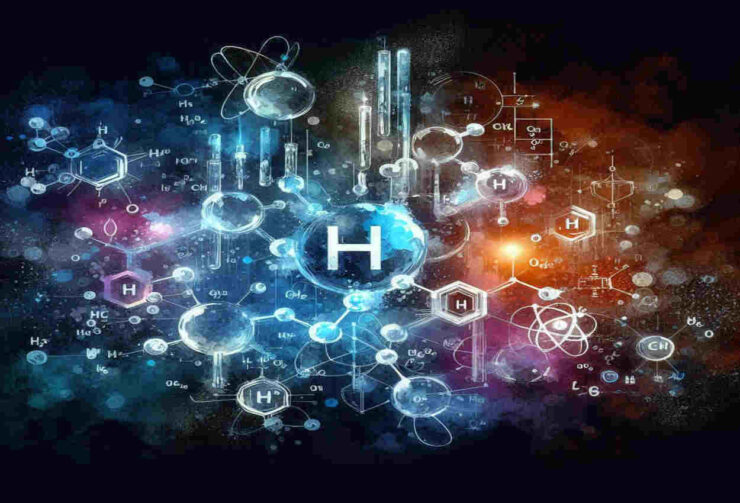Hydrogen Derivatives are chemical substances produced by reacting hydrogen (H₂) with other elements (e.g., nitrogen, carbon) or compounds. Primary purpose of serving as energy carriers & fuels.
The urgency of addressing climate change necessitates a rapid transition towards clean energy sources. Hydrogen, with its high energy density (gravimetric), zero carbon emissions at the point of use, has emerged as a front runner. However, its gaseous nature presents substantial hurdles in hydrogen storage and long-distance transportation. However Hydrogen derivatives bridge this gap, offering a more versatile and transportable form of clean energy.
Hydrogen Derivatives – Definition
Hydrogen derivatives are a specific subset, narrower category of hydrogen compounds or substances. They are chemical substances produced from hydrogen gas (H₂), with the primary purpose of serving as energy carriers, fuels, or for hydrogen storage or feed stocks enabling hydrogen storage/transport in more practical forms. They are “derived” from pure hydrogen for energy applications. Hydrogen derivatives are optimized for energy storage and release. Other hydrogen compounds exhibit diverse chemical behaviors based on their composition.
Hydrogen derivatives are not inherently “green”. There are primarily two types based on the source of the hydrogen used. Hydrogen derivatives are classified as grey derivatives when produced using fossil fuel based hydrogen (grey or black hydrogen). Called as Green derivatives when produced using hydrogen from renewable sources.
- Energy Density: Hydrogen derivatives have high hydrogen content by weight, making them efficient for energy storage and transportation
- Chemical Stability: They are stable under normal conditions but can release hydrogen under specific chemical or thermal conditions.
- Applications: Used in fuel cells for electricity generation, as chemical feedstocks, or for energy storage.
- Applications: Hydrogen derivatives are primarily used in energy applications, e-fuels in transportation and industry, and hydrogen compounds in various chemical processes.
The hydrogen chemicals produced using green/ low carbon hydrogen, thus replacing the conventional hydrogen (grey, black hydrogen from fossil fuels) are called green hydrogen derivatives. The same hydrogen chemicals produced using hydrogen from fossil fuels then they are called as grey hydrogen derivatives.
Several types of hydrogen derivatives (mostly green) are under development, each targeting specific applications with different production pathways however we will see the important ones as below mentioned. In some cases, like as mentioned above of using captured CO2 , plastic wastes are also used as inputs in the production process of derivatives.
Key Hydrogen Derivatives:
Green Ammonia (NH3): is the primary green hydrogen derivative, well proven, and several projects are on the way across the globe. Produced via the Haber-Bosch process, combining clean Hydrogen (green H2 produced by electrolysis) with atmospheric nitrogen (N2). Green ammonia boasts a zero-carbon footprint, unlike conventional grey ammonia (responsible for ~1.8% of global CO2 emissions). Green ammonia, a leading hydrogen carrier, easier to liquefy and transport than hydrogen, and can be used directly as a fuel (though with NOx emission concerns) or “cracked” back into hydrogen at the point of use.
Studies suggest a promising prospect for green ammonia production, with a recent catalysis study, published in Nature, demonstrating a scalable electrocatalyst achieving 83% Faradaic efficiency for NH3 synthesis at ambient temperature and pressure.
Liquid Organic Hydrogen Carriers (LOHCs): Specific organic molecules (like toluene/methylcyclohexane or dibenzyltoluene) designed to reversibly react with hydrogen. They “absorb” hydrogen to become hydrogen-rich liquids for safe and efficient transport and storage at ambient conditions, and then “release” hydrogen upon dehydrogenation at the point of use.
Hydrogen Peroxide (H₂O₂)
- Description: Hydrogen + Oxygen.
- Green Derivative: Renewable H₂ + green O₂.
- Grey Derivative: Fossil H₂.
- Use: Disinfectants, bleaching agents.
Formic Acid (HCOOH)
- Description: Hydrogen + CO₂.
- Green Derivative: Renewable H₂ + captured CO₂.
- Grey Derivative: Fossil H₂ + fossil CO₂.
- Use: Chemical industry, hydrogen storage
E-fuels (electrofuels) or synthetic fuels
eFuels are the most specific and technologically advanced category of hydrogen derivatives. They are produced by combining green (low-carbon) hydrogen with CO₂ captured directly from industrial emissions, effectively recycling CO₂ instead of releasing it into the atmosphere. Unlike general hydrogen derivatives, e-fuels are a defined subset that strictly requires both renewable hydrogen and captured carbon to qualify as sustainable alternatives to fossil fuels.
E-fuels (Electrofuels) or Synthetic liquid fuels like methanol (CH3OH) or synthetic gasoline or jet fuel (various hydrocarbons). They are fully compatible with existing transportation infrastructure , called as drop-in replacement but offer significantly lower lifecycle emissions compared to fossil fuels (e.g., lifecycle CO2 emissions of jet fuel from biomass-based Fischer-Tropsch synthesis: 70-90 gCO2e/MJ vs. conventional jet fuel: 85-95 gCO2e/MJ)
- Synthetic Methane (CH4): Produced via methanation, which combines clean hydrogen (green or low carbon) with captured CO2. This clean alternative to natural gas can be injected into existing gas pipelines (methane volumetric density: 68 kg/m^3) for power generation, heating, and industrial applications. A Joule study, demonstrated a CO2 methanation process achieving a methane yield of 99% and a CO conversion rate exceeding 90%.
- Synthetic Methanol (CH3OH):While often categorized as an E-fuel, methanol deserves a separate mention due to its diverse applications in transportation (fuel blending) and industrial processes. It can be produced via the combination of H2 and CO2 through various synthesis pathways.
- Synthetic Kerosene: A crucial derivative for the aviation industry. It can be produced via various pathways
- Renewable Propane (r-Propane):A clean alternative to conventional propane (LPG), its potential for decarbonizing the LPG sector.
Hydrogen derivatives – Key Takeaways:
- Not All Derivatives Require CO₂:
- Ammonia (NH₃) uses nitrogen, not CO₂.
- Derivatives like LOHCs (liquid organic hydrogen carriers) use organic liquids (e.g., toluene).
- E-Fuels ≠ All Hydrogen Derivatives:
- E-fuels are a specific category of derivatives requiring green H₂ + captured CO₂.
- Not all hydrogen derivatives are e-fuels (e.g., green ammonia is a derivative but not an e-fuel).
- Hydrogen source clarification:
- Grey/black hydrogen (from fossils) produces grey derivatives (e.g., grey ammonia).
- Green hydrogen produces green derivatives (e.g., green ammonia
Conclusion:
The diverse range of hydrogen derivatives, each with specific properties and applications, unlocks the full potential of clean hydrogen for a de-carbonized future. Continued research and development efforts focused on cost reduction, infrastructure development, and supportive policies are crucial for their widespread adoption. As techno-economic considerations improve and LCA data strengthens, hydrogen derivatives are poised to play a transformative role in achieving a sustainable energy landscape.
This article is Copyright protected







Add comment